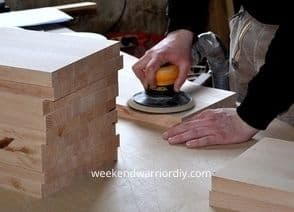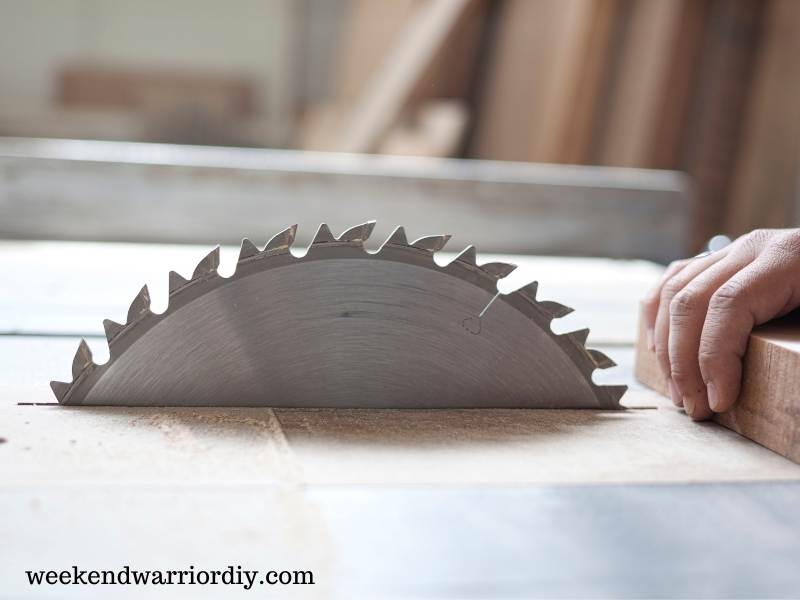The Japanese art of burning wood called shou sugi ban (or yakisugi) is increasing in popularity. With the growing interest in this Japanese technique, more questions are being asked about the process and outcome.
This is a good thing because it helps us all learn more about shou sugi ban. A fair question has come up on regarding whether charring wood will weaken it or not. I think this is an interesting point and one that deserves delving into.
Shou sugi ban doesn’t weaken wood when applied correctly. The depth of the charring dictates the woods strength. Don’t char the wood deeper than 3mm. The thickness of the wood affects the strength as well.
In this article, I’ll dive deeper into this answer providing my opinion as well as including some other interesting points and tips regarding shou sugi ban. So, if you are ready to learn more, then let’s get to it!
How Durable is Shou Sugi Ban Wood?
Charred wood, or Yakisugi, is an excellent finished product for use in building facades and other projects because of the resistance and weatherproof qualities it provides.
By charring the outer surface of the wood, you have now made the product fire resistant, bug resistant, and weather resistant.
Once coated with the proper oil, the result of shou sugi ban is an extremely durable product.
What Makes Shou Sugi Ban (Yakisugi) so Durable?
The most durable materials we know of are those that have been charred. And while there are many ways to do this, one method stands out above others: burning wood.
Several key factors contribute to Shou Sugi Ban’s durability. Contrary to popular belief, fire is an excellent wood enhancer if applied moderately and in a well-controlled environment by someone who knows what they’re doing. The process is fairly straightforward – first, heat the wood to release the moisture inside; second, brush the loose soot off and wash the boards to remove any other loose particles.
Next, sealing the wood with natural oils will strengthen and protect from the elements. These steps, performed properly, will naturally keep the wood safe from UV radiation, moisture, and bugs.
Another important thing to consider is the quality of the material. Some woods burn well, others don’t. Soft, porous, natural resiliency woods work best with this technique. Examples include cedar (preferred), pine and Siberian Larch. These lower density materials hold up well because their molecular structure allows char to accumulate on their surface. Ideally, there should be at least 2 mm thick of char so that it takes longer for the wood to erode.
Finally, the finishing, a natural oil coat gives Shou Sugi Ban is lasting quality. Thanks to its water repellent properties, natural oils will keep your boards coated, yet still dehydrated. It’s hugely relevant to use charred wood in outdoor projects because a cladding, deck or fence with limited water vulnerabilities is less likely to rot.

Conditions that Impact the Aging of Shou Sugi Ban
Shou sugi ban’s lifespan depends on human factors, environmental factors, and genetic factors. You can do your part in preserving shou sugi ban by first installing it correctly and oiling it every 5-10 years.
Proper installation and charring will help to prevent moisture buildup in the wood. Oiling will slow down the degradation of wood fibers by blocking UV rays and providing a water-resist seal.
The outer layer (charred wood) of your shou sugi ban naturally maintains the wood for more than 40 years, assuming you oil it on a regular basis. Eventually, it’ll begin to erode. This process can be sped up by excessive winds and humid sub-tropical regions. Humidity is probably shou sugi ban’s worst enemy and will encourage rotting.
UV rays will also affect how long your shou sugi ban lasts. Walls facing south and west will weather different than walls facing north or east.
Don’t worry about discoloration from the sun however, as keeping the wood oiled on a regular basis will almost stop this from happening.
Now depending on what region, you live, freezing might be an issue if there’s a lot of moisture in the air. If you live in a dry region, then you don’t have as much to be concerned with.
Lastly, if termites are an issue where you live, I have good news and bad news. Charred wood will most likely minimize an infestation of termites but not necessarily stopping it completely.
If termites gain access to the inner portion of the wood that hasn’t been charred, they’ll feed on that wood. The good news though is if you char and seal the wood properly, any possible threat from termites will most likely be deflected.

Final Thoughts on Shou Sugi Ban Weakening Wood
I hope this article has helped you understand some of the things that impact the longevity of your shou sugi ban.
To sum-up, the only way the wood will be weakened is if you burn in more than 2 or 3 mm deep. It also depends on how thick the wood is. A bit of common sense comes into play here. If the wood is thick, then you can char it a bit longer.
There are many other variables that determine how long your shou susugi ban will last including: humidity, temperature, location, etc. But hopefully these few tips will give you a head start on making sure your shou sugi bans stays strong for decades to come.
The benefits of charred wood are many, including increased stability and resistance to decay. The process also makes the wood easier to work with, since the surface is smoother and less porous. In addition, the natural oils applied to wood help protect against insects and fungi.
I hope this information has given you the confidence to go ahead and try out yakisugi (shou sugi ban) yourself. Good luck!



